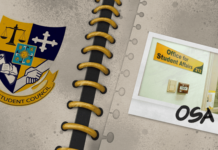 EMBATTLED faculty union chief Dr. Gil Gamilla, who is facing calls to resign or be removed, himself took over the union leadership 14 years ago by unseating his predecessor, lawyer Eduardo Mariño.
EMBATTLED faculty union chief Dr. Gil Gamilla, who is facing calls to resign or be removed, himself took over the union leadership 14 years ago by unseating his predecessor, lawyer Eduardo Mariño.
Gamilla became union president in 1996 amid distrust over Mariño’s leadership, and the tacit approval of UST officials.
Before two decades of industrial peace, however, UST was rocked by a faculty strike in 1989 that led to the dismissal of union officials, including Mariño. Mariño’s group sued and was ordered reinstated by the courts.
UST and the Mariño-led union eventually reached a P7-million settlement in 1990, and inked a collective bargaining agreement (CBA) following compulsory arbitration under the Department of Labor and Employment (DOLE). Two years later, the faculty union secured a P42-million package to cover salary increases up to 1993.
In 1996, a “Reformist Alliance” opposed to Mariño’s leadership emerged. Aside from Gamilla, the group had the support of faculty members from different colleges and faculties, like Geronimo Quadra, who served as the group’s counsel for the Faculty of Civil Law.
Court records showed Mariño obtained P4.2 million in attorney’s fees for negotiating the P42-million package in 1992. The Second Division of the Supreme Court reprimanded him in 2003 for “misconduct” as a result of “conflict of interest,” for acting as union president and union lawyer at the same time.
Back on October 2, 1996, Fr. Rodel Aligan, O.P., then secretary general, issued a memorandum allowing the holding of a faculty convocation two days later.
The Reformist Group unexpectedly called for an election of officers, prompting some members of the union to walk out of the meeting. Supposedly, the election would take place in a general assembly the following day as announced by Mariño.
The Reformist faction pushed through with the election anyway, installing Gamilla as president.
In December 1996, UST and the union, now headed by Gamilla, reached a new five-year CBA covering 1996 to 2001.
Mariño went to the National Labor Relations Commission (NLRC) to seek the nullification of the election of Gamilla and others. He also accused UST of interfering in an intra-union dispute, charging it of “unfair labor practice” for helping Gamilla’s group and negotiating a CBA with the new union leadership despite the fact that a CBA was in force until 1998.
On Jan. 27, 1997, Gamilla’s group, accompanied by barangay chairman Dupont Aseron and UST security chief Justino Cardenas padlocked the office of Mariño’s group. A security guard was also stationed in front of the office. The Supreme Court ruled in 2005 that this was a matter for a trial court to decide, not the labor tribunals.
Last year, the Supreme Court cleared UST of accusations of unfair labor practices, but apparently, the legitimacy of Gamilla’s election has yet to be settled by courts.
On Feb. 11, 1997, a labor arbiter issued a resolution declaring the election of Gamilla et. al. “null and void.” They were then ordered to “cease and desist from performing the duties and responsibilities of Union officers.” An appeal made by Gamilla’s group before the Bureau of Labor Relations, and eventually before the Court of Appeals, proved futile after the two bodies favored the NLRC resolution.
The case reached the Supreme Court, which ruled in April 2009 that while Gamilla’s legitimacy was in question, UST had no choice but to negotiate with his group in 1996 before the labor tribunals declared the 1996 union election as illegal.
The Supreme Court ruling stated that “it is not the duty or obligation of [UST] to inquire into the validity of the election of the Gamilla group. Such issue is properly an intra-union controversy subject to the jurisdiction of the med-arbiter of the DOLE. [UST] could not have been expected to stop dealing with the Gamilla Group on the mere accusation of the Mariño Group that the former was not validly elected into office.”
The court’s decision also stated that the memorandum Fr. Aligan had signed, allowing the faculty to hold a convocation, was merely an approval. It did not necessarily require faculty members to attend and there was no single administrator present in the convocation as per Mariño’s account.
Allegations of connivance with the administration to elect new union officers were therefore unfounded, the ruling said.
On the allegation that UST helped Gamilla padlock the Mariño group’s office, the court noted that there was a certification by messenger Alexander Sibug that he was the one who locked the office, not anybody from Gamilla’s group.
Sibug said he was “not forced, nor harassed” in padlocking the office.
“Mariño provided a photograph of a security guard standing before the Union’s office, but this evidence failed to support Mariño’s conclusions,” the decision said. “While it evidences (sic) that there was indeed a guard posted at the Union’s office, such cannot be used to claim that the guard prevented the Mariño Group from performing its duties.”
The picture of the armed security guard in front of the union office also did not show that Mariño’s group was barred from entering the room. Andrewly A. Agaton and Alexis Ailex C. Villamor, Jr.










